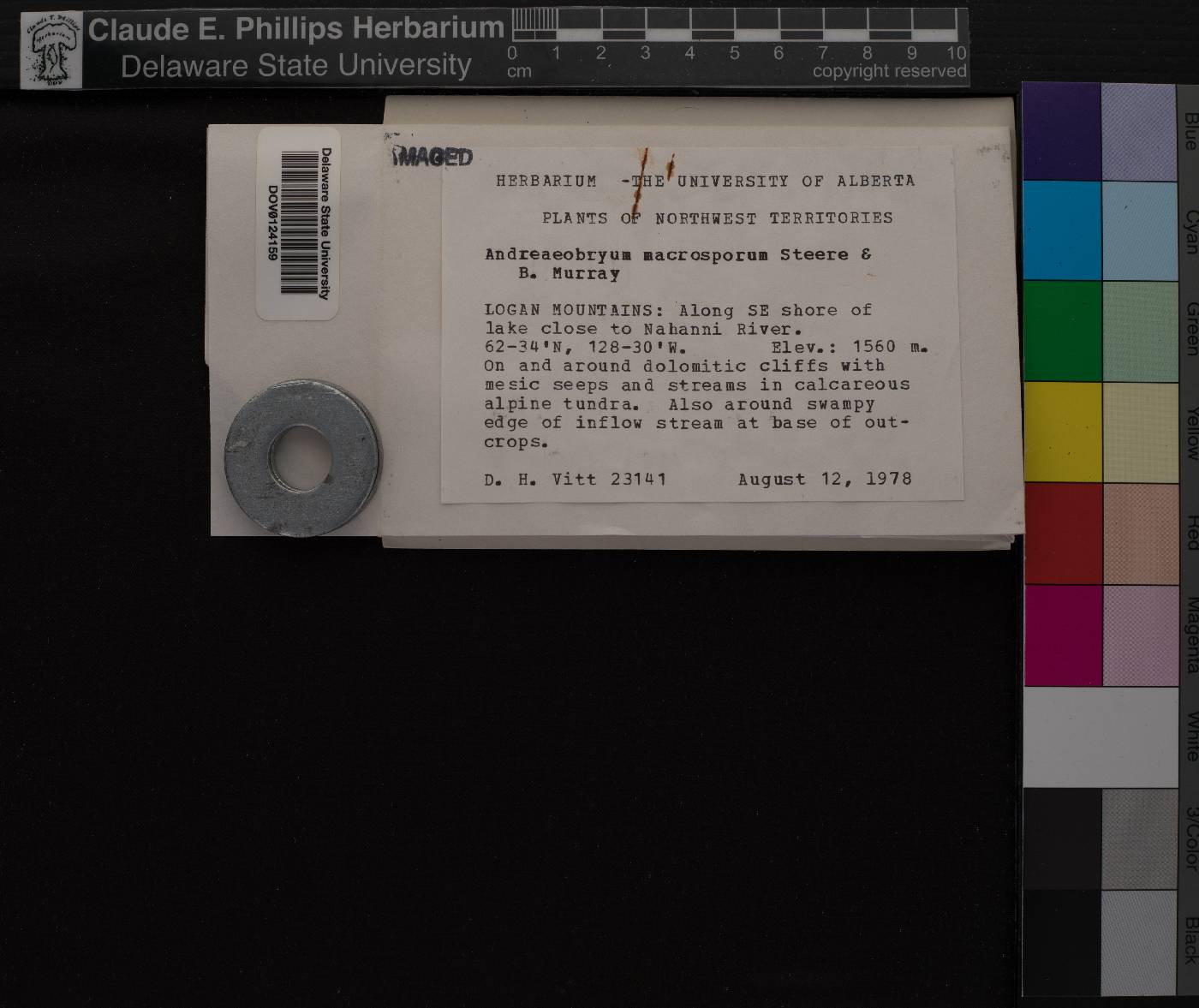Andreaeobryaceae
|
Andreaeobryaceae |
|
|
Plants clear green to olive green to dark red-brown to dull black, moderate in size, pulvinate to mat-forming. Stems erect, irregularly branched; rhizoids present; central strand absent. Leaves dimorphic, falcate-secund and ovate-lanceolate, occasionally minute, ecostate, imbricate, squamiform on flagelliform shoots or proximally on main stem; costa single, broad, indistinct, excurrent, forming a broad, obtuse subula, lamellae absent, in section at midleaf with substereid cells centrally, adaxially and abaxially of more or less uniform thick-walled cells; margins plane to weakly tubulose, never recurved; laminal cells rounded-quadrate to short-rectangular, 1-stratose at base, becoming 2-stratose distally, multistratose in four layers when filling the fleshy subula. Specialized asexual reproduction absent. Perichaetial leaves scarcely differentiated from stem leaves, not convolute-sheathing. Pseudopodium as an elongate gametophytic stalk not developed. Sporophytes terminal on a short and broad seta. Capsule erect, rounded angular-ovate (trullate), broadest toward the base, opening irregularly during period of dehiscence by 4-8 lateral longitudinal valves connected at the apex; stomata, annulus, operculum, and peristome absent. Calyptra large, enveloping the whole capsule, mitrate, becoming cucullate on dehiscence, persistent. Spores chlorophyllose or aborted, the former spheric to ovoid, relatively large, (50-)90-100(-120) µm, papillose or reticulate-papillose. Unlike the case with the similar Andreaeaceae, in Andreaeobryaceae the elevating stalk supporting the capsule is derived from sporophytic (diploid) rather than gametophytic (haploid) tissue. The foot of the seta is embedded in the vaginula at the stem apex, as generally occurs in mosses of the Bryales. Sporogenous tissue and the columella are derived from the endothecium, uniting the family with that of the Andreaeaceae in this respect, and not with the Sphagnaceae, where the spore sac derives from the amphithecium. The capsule is also unlike that of the Andreaeaceae, which is clearly elliptic, not angular-ovate. The family is also similar to Andreaea in the presence of thallose protonematal appendages. The axillary hairs at the base of the leaves have terminal cells that are beaked, as in the genus Takakia. The leaves are not particularly fragile, but fragmentation may prove a factor in asexual reproduction for the species. The following is a modification of B. M. Murray´s (1987) treatment.
|
|
